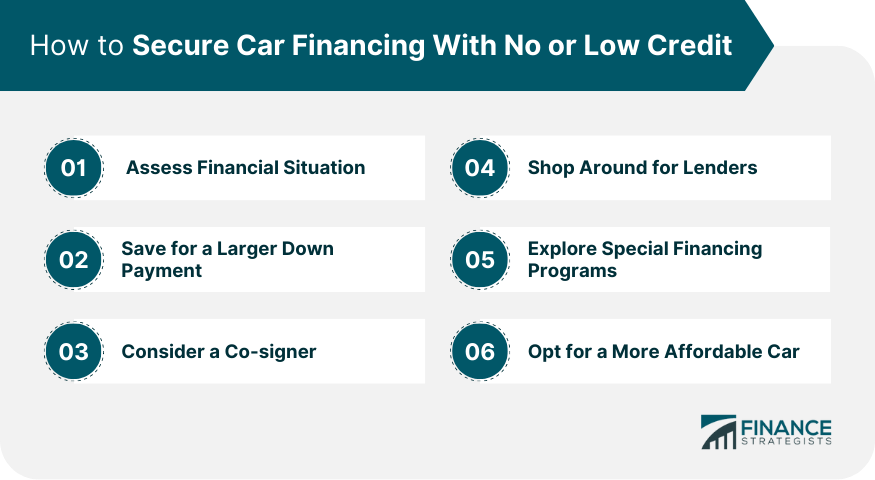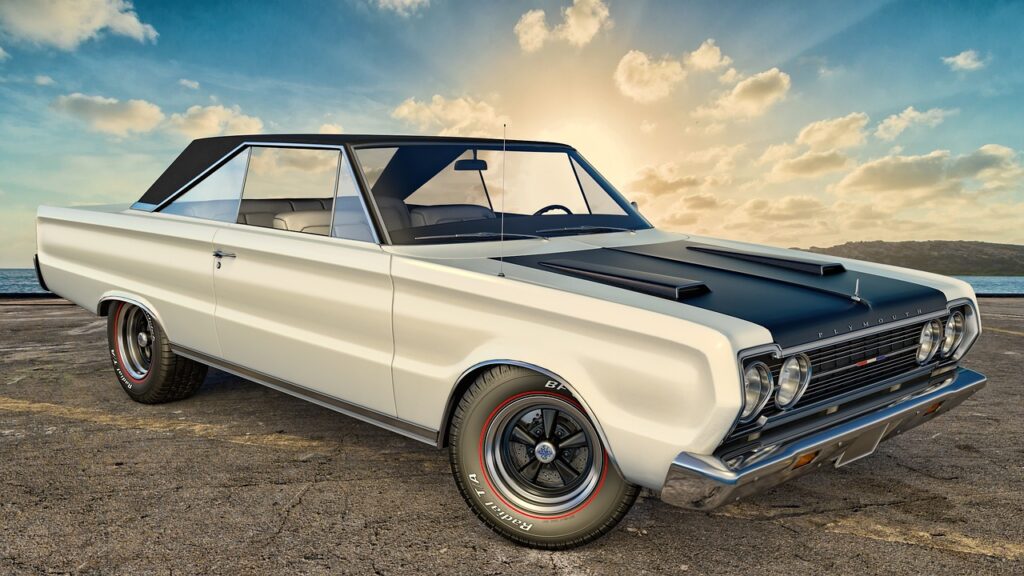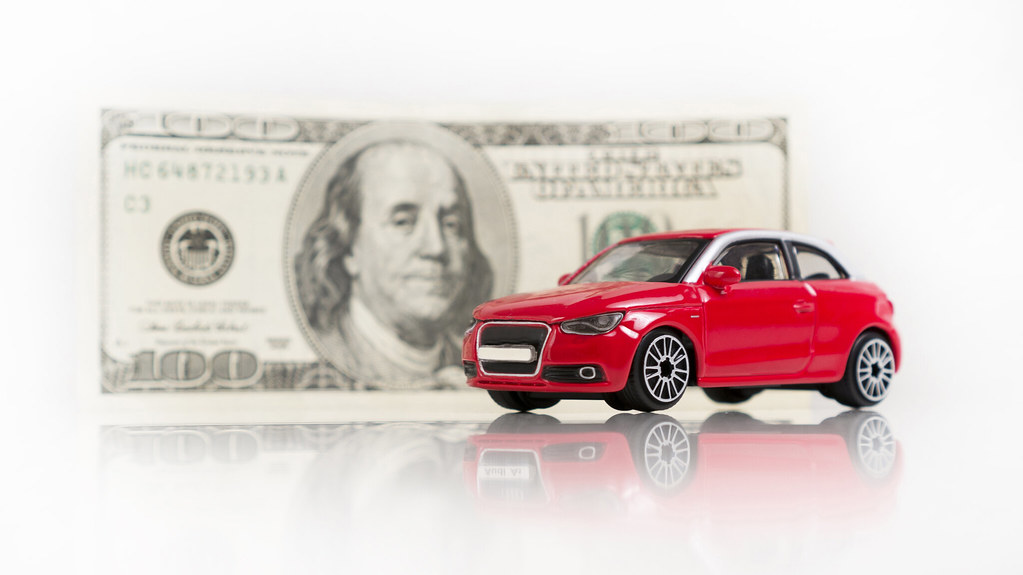
Purchasing a vehicle, whether new or used, represents a significant financial commitment, often one of the largest an individual will make outside of housing. While the excitement of a new set of wheels or the practicality of a pre-owned model can be captivating, focusing solely on the initial purchase price is a common pitfall that can lead to substantial financial strain down the road. Savvy consumers understand that the true cost of vehicle ownership extends far beyond what is paid at the dealership, encompassing a complex array of ongoing expenses that accumulate significantly over time. It’s not just about the money leaving your account at the moment of sale; it’s about the consistent outflow for years to come.
To truly grasp the financial implications of vehicle ownership, it is essential to delve into what experts refer to as the True Cost to Own®, or TCO®. This comprehensive metric considers all the monetary aspects of possessing and operating a vehicle over a defined period, typically five years, allowing consumers to make more informed decisions that align with their long-term financial health. The TCO® calculations are designed to be a comparative tool, providing a robust framework for understanding the full financial picture. By meticulously examining each component, from depreciation to repairs, drivers can gain clarity on where their money is really going.
This in-depth analysis will meticulously break down nine critical factors that contribute significantly to the True Cost to Own®, often draining wallets unexpectedly over a five-year period. We will explore each element, utilizing the rigorous, data-driven approach characteristic of informed consumer guidance. Our goal is to equip you with the knowledge to look beyond immediate expenditures and identify the long-term financial commitments inherent in vehicle ownership, helping you navigate the automotive market with greater confidence and fiscal prudence. Understanding these factors is paramount, especially when considering vehicles like trucks, which often carry higher costs in several key categories.
1. **Depreciation: The Silent Wallet Drainer**Depreciation stands as arguably the most significant, yet frequently overlooked, financial burden in the realm of vehicle ownership. This term precisely defines the amount by which a car’s value diminishes from its purchase price to its estimated resale value at a future point. It is an inexorable reality of vehicle ownership: as a car accumulates age and mileage, its market worth inevitably declines. People often tend to overlook depreciation, but it is explicitly identified as the biggest cost of ownership in many cases, quietly eroding a substantial portion of a vehicle’s initial value long before it is traded in or sold on the open market.
The impact of depreciation can be startling, particularly for new vehicles. According to industry observations, a new car can lose as much as 60% of its value in the first three years alone. This rapid decline occurs largely irrespective of how well the vehicle is maintained or how carefully it is driven during this initial period. This initial period of sharp decline highlights why many financial advisors suggest considering lightly used vehicles, as they have already absorbed the steepest part of the depreciation curve, offering potentially better value retention for the subsequent owner.
When a consumer eventually decides to sell or trade in their car, the depreciation represents the exact difference between the amount initially paid for the vehicle and its market value at the time of sale, making it a direct and often substantial financial loss. This loss is not merely theoretical; it directly impacts your ability to recover your investment or to put towards your next vehicle purchase. Understanding this core economic principle is fundamental for any consumer aiming to mitigate their overall ownership costs and make a financially sound investment in their transportation.
While used cars typically do not experience the same steep rate of depreciation as new vehicles, the concept remains crucial for all buyers. When deciding what car to buy, people look at price, economy, and style first. However, the influence of depreciation on finance is critical. A car that doesn’t depreciate as much will save you more money over its lifespan than one that costs a little less to fill up or lasts longer between refuels. This long-term perspective is vital for true financial savings, emphasizing that a seemingly good deal upfront can prove costly later on.
The True Cost to Own® calculations factor in depreciation by estimating the resale value based on standardized assumptions. These include the vehicle being in “clean” condition and driven 15,000 miles per year, with the eventual sale occurring to a private party. This estimation provides a clearer picture of the real financial commitment beyond the initial transaction. It acts as a crucial alert for consumers to consider not just the buying price, but the selling price down the line, as a fundamental aspect of their total investment. This comprehensive view is what separates true value from perceived affordability.

2. **Insurance Premiums: More Than Just a Policy**Insurance premiums constitute another significant and unavoidable component of vehicle ownership that contributes substantially to the True Cost to Own®. This category represents the estimated average annual insurance premium applicable in your state, meticulously determined based on extensive annual premium data. This data is derived from defined driver profiles and standard coverages, including liability, comprehensive, and collision, as provided by a major national insurer. While the TCO® calculations are specific to vehicle make, model, model year, and body type, it is critical to understand that these estimates do not account for individual personal information.
The absence of personal data in the standardized TCO® calculation means that your actual premium quoted by an insurer could diverge significantly from the general estimate. This variability underscores a key principle in consumer finance: individualized factors have a profound impact on real-world costs. A multitude of personal circumstances can greatly alter the actual premium that you will pay. These crucial factors include your age, marital status, your credit history, and your specific driving record, all of which are weighted heavily by insurance providers in their risk assessments.
Furthermore, the physical location where your vehicle is primarily garaged also plays a substantial role in determining your insurance rate. For instance, urban areas with higher population densities, increased traffic congestion, or elevated rates of vehicle theft typically incur higher premiums than more sparsely populated or safer rural locales. The garaging address can introduce significant geographical variations in premiums, making it a critical consideration often overlooked in broad financial planning. This regional specificity means what you pay could be vastly different from a national average.
These personal and geographical variables, while not captured in the generic TCO® model, are crucial for a precise understanding of this recurring cost. Ignoring these personal variables can lead to a considerable underestimate of the true, ongoing expense of insuring a vehicle over its five-year ownership period. Therefore, relying solely on broad estimates without considering personal factors is a common mistake that can lead to unexpected financial burdens.
Therefore, while the TCO® provides a valuable baseline, consumers are strongly advised to obtain personalized insurance quotes specific to their situation and chosen vehicle to gain a precise understanding of this recurring cost. This proactive step ensures that the often-substantial expense of insurance is realistically factored into their overall vehicle budget, preventing any unwelcome financial surprises. It is a fundamental aspect of responsible vehicle ownership that extends far beyond the initial purchase, demanding individual research for accuracy.
Read more about: The Insurance Agent’s Essential Picks: 15 Key Insights for Affordable Car Insurance in Seattle and Washington

3. **Financing Costs: The Interest You Pay, or Lose**For the vast majority of vehicle purchasers, financing costs represent an integral and often substantial part of the True Cost to Own®. This category specifically accounts for the interest expense incurred on a loan that covers the Total Cash Price of the vehicle. The TCO® calculations are built upon a set of standardized assumptions for financing: it presumes the use of traditional financing rather than leasing, a 10% down payment made at the time of purchase, and a loan term of 60 months. Furthermore, the calculations assume that the consumer possesses an above-average credit rating, which directly influences the finance rate applied.
The interest rate utilized in these calculations reflects the prevailing rates that banks and other direct automotive lenders are currently charging consumers within your specific geographic region who exhibit above-average credit scores. It is important to recognize that a less-than-stellar credit rating can lead to significantly higher interest rates, thereby elevating the overall financing cost and, consequently, the total TCO®. This makes maintaining a good credit score a practical financial advantage when considering vehicle acquisition.
A crucial insight from the True Cost to Own® methodology is its inclusion of financing cost even for individuals who choose to pay for their vehicle entirely with cash. This isn’t merely a theoretical exercise; it reflects the estimated “opportunity cost.” Opportunity cost refers to the amount you could potentially earn if you were to invest the purchase price elsewhere, rather than tying it up in a depreciating asset like a vehicle. By including this, TCO® provides a more complete financial picture, highlighting the potential earnings foregone by using cash for an immediate purchase.
Given the impact of financing on the overall ownership cost, prudent consumers are advised to proactively secure pre-approval from a financial institution before engaging in discussions about finance rates with a car dealer. This strategy empowers buyers with leverage and ensures they can access the most favorable lending rate available to them, effectively minimizing this particular drain on their wallet over the five-year ownership period. By separating the financing negotiation from the vehicle purchase, you can secure significant savings.
Read more about: Navigating the New FICO Score Changes: What Buy Now, Pay Later Integration Means for Your Next Loan
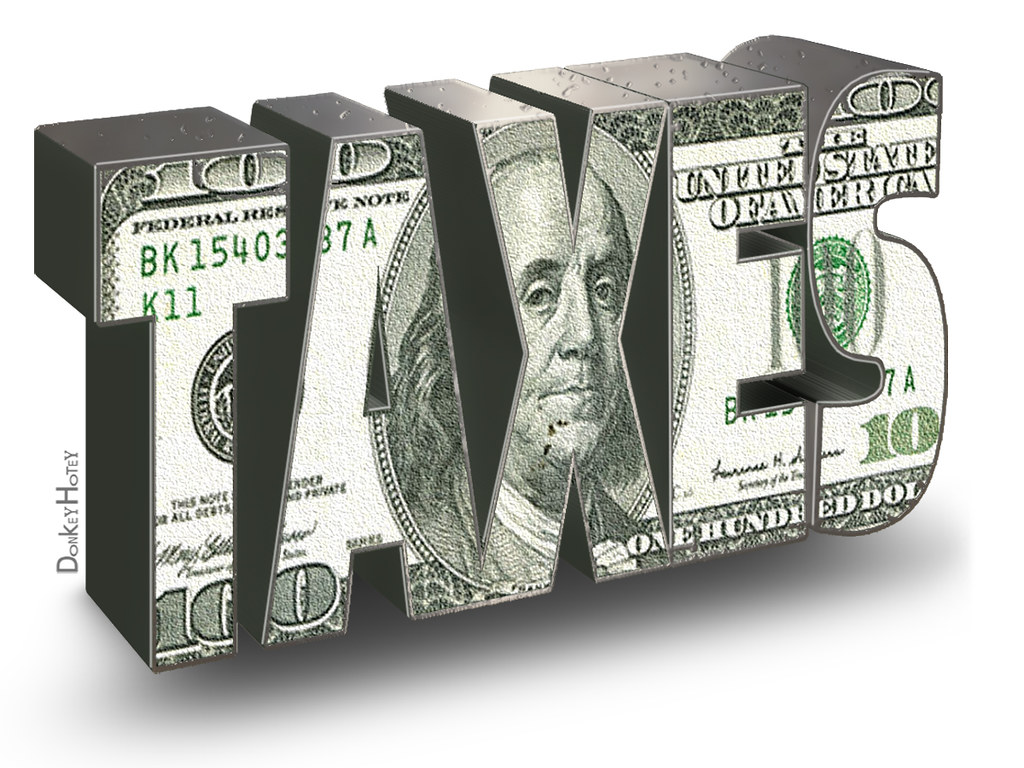
4. **Taxes & Fees: The Unavoidable Additions**Beyond the purchase price, insurance, and financing, a vehicle’s True Cost to Own® is significantly impacted by a collection of governmental charges: taxes and fees. This category encompasses the base sales or use taxes, mandatory license and registration fees imposed by your state, and, where applicable, the gas-guzzler tax. These are not merely one-time administrative charges; they represent a recurring financial commitment that adds to the overall burden of vehicle ownership over the five-year analysis period. Ignoring these statutory costs would provide an incomplete and misleading picture of true expenditure.
The structure of these taxes and fees is often directly tied to the vehicle’s purchase price, typically assessed as a percentage of the transaction amount. For instance, higher-priced vehicles will naturally incur a greater sales tax burden upon acquisition. It is important to note that the state sales/use tax rate factored into the TCO® calculations is comprehensive, including the average local and county taxes assessed within that state. This ensures a more accurate representation of the total tax burden faced by consumers across different regions.
A silver lining in this category is that these taxes and fees generally tend to decrease as the vehicle ages and, consequently, loses its value through depreciation. As the assessed value of the vehicle diminishes over time, so too do the annual registration and certain other fees that are tied to this valuation. However, the initial outlay can still be substantial, and these ongoing costs remain a consistent drain on a car owner’s finances, necessitating careful consideration in budgeting for long-term ownership.
Understanding these mandatory charges is crucial for any prospective buyer, especially those considering vehicles with higher initial price points, which will inherently attract greater upfront tax liabilities. Factoring in these unavoidable governmental assessments from the outset allows for a more realistic financial projection, preventing surprises and reinforcing the comprehensive nature of the True Cost to Own® methodology in assessing long-term affordability.
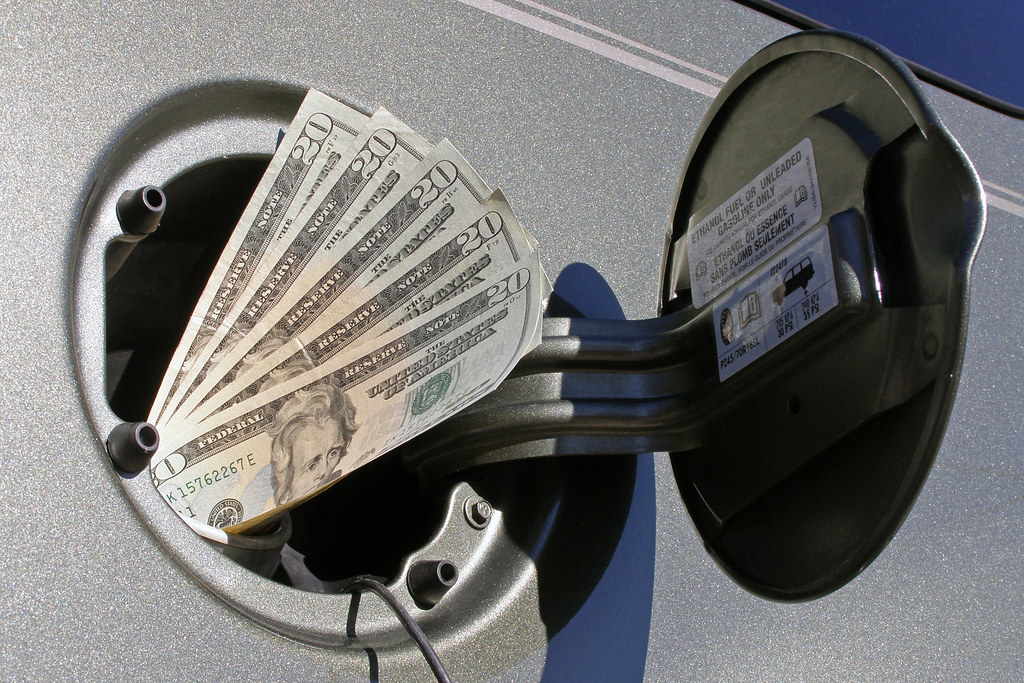
5. **Fuel Costs: A Fluctuating Expense That Adds Up**The cost of fuel is a persistent and often variable expense that forms a critical part of a vehicle’s True Cost to Own®. This category covers the estimated expense for powering your vehicle over the five-year period, based on precise parameters designed to reflect real-world usage. Fuel expenses are calculated using the revised EPA mileage ratings, assuming a consumption pattern consisting of 45% highway driving and 55% city driving. Furthermore, the estimates are based on the vehicle being equipped with the transmission that is standard equipment for that particular model, ensuring consistency in the data.
Cost estimates for fuel are dynamically determined based on the current one-year moving average of self-service prices within your specific state. This localized approach accounts for regional variations in fuel costs. The type of fuel required by a vehicle is also meticulously considered: regular unleaded gasoline for vehicles whose manufacturers specify regular, premium unleaded gasoline for those recommending or requiring premium, and diesel fuel for diesel-powered vehicles. This nuanced approach ensures that the fuel cost component accurately reflects the manufacturer’s specifications and regional pricing.
In a notable shift in recent years, the dynamics of fuel costs have significantly impacted the overall ownership equation for different vehicle types. The average gas prices experienced a considerable decline, falling 12.8% from the previous year to an average of $0.13 per mile. Regular grade gasoline for vehicles included in the study averaged $3.151 per gallon, a noticeable decrease from $3.539. This reduction in gasoline prices offers a measure of relief for owners of internal combustion engine vehicles, impacting their TCO® favorably.
Conversely, electricity prices for charging electric vehicles have experienced a slight increase, rising to $0.167 per kilowatt-hour from $0.159 in 2024. This upward trend in electricity costs, coupled with the decline in gasoline prices, has led to a significant re-evaluation of EV ownership costs. While electric vehicles still offer fuel savings—less than half of gas vehicle costs—this advantage is no longer sufficient to offset their higher ownership costs in other categories, as explicitly stated by AAA. Consequently, EVs are now considered more expensive overall across all vehicle categories in the recent study, a surprising development that challenges previous assumptions about their long-term affordability. This makes careful consideration of fuel type and its associated costs more important than ever for consumers.
Read more about: The Hidden Costs: Unmasking the Real Reasons Your Electric Bill Exploded After Bringing Home an EV

6. **Maintenance Expenses: The Unseen Upkeep**Beyond the initial purchase and regular operational costs, the ongoing health of your vehicle hinges on timely and appropriate maintenance. This category encapsulates the estimated expenses for both scheduled and unscheduled upkeep necessary to keep your vehicle running optimally and safely. It’s a fundamental aspect of ownership that directly impacts performance, longevity, and ultimately, your financial outflow.
Scheduled maintenance refers to the factory-recommended services performed at periodic mileage or calendar intervals, acting as preventive care. These vital services often include routine oil changes, tire rotations, fluid checks and top-offs, filter replacements (air, oil, cabin), and thorough inspections of key components. Adhering to these manufacturer guidelines is paramount, not only for preserving the vehicle’s warranty but also for mitigating the risk of more serious, and costly, issues down the line.
Unscheduled maintenance, on the other hand, covers the unexpected but inevitable replacements of wear-and-tear items that arise from normal vehicle operation. This can include essential components such as batteries, brake pads and rotors, headlights, hoses, exhaust system parts, taillight and turn signal bulbs, and, significantly, tires and wiper blades. While these might seem like minor expenses individually, their cumulative cost over five years can be substantial and often surprises vehicle owners who haven’t budgeted for them.
For instance, tire replacement costs are a considerable part of this category, with estimates specifically supplied to Edmunds by The Tire Rack Inc. This highlights the granular detail considered within the True Cost to Own® methodology. Over five years, assuming 15,000 miles driven annually, most vehicles will require at least one full set of new tires, if not more, depending on driving habits and tire quality.
Neglecting either scheduled or unscheduled maintenance is a false economy, as minor issues can quickly escalate into major repairs. Regular check-ups and prompt attention to wear items not only ensure your vehicle’s reliability but also play a critical role in preserving its resale value. It is a proactive investment that safeguards your initial automotive expenditure and ensures safer, more efficient driving.

7. **Repair Costs: When Things Go Wrong**Distinct from routine maintenance, repair costs represent the estimated expense for unforeseen issues not covered by the vehicle manufacturer’s original warranties. These are the unexpected breakdowns or component failures that occur after the protective umbrella of the factory warranty has expired, typically within the five-year ownership period analyzed by the True Cost to Own® framework. Such costs can be highly unpredictable and significantly impact a vehicle’s long-term affordability.
The TCO® methodology employs a sophisticated approach to estimate these potential expenditures. It bases its assessment on the cost of a typical “zero deductible” extended warranty for the specific vehicle, then subtracts the estimated amount attributed to the warranty provider’s overhead and profit. This calculation provides a realistic approximation of what a consumer might face in out-of-pocket repair costs, assuming 15,000 miles are driven annually.
The reliability of a vehicle, therefore, becomes an absolutely critical factor in managing this particular financial drain. Vehicles with strong reputations for dependability and fewer reported issues tend to incur lower repair costs, making them a more fiscally sound choice over the long haul. Conversely, models known for frequent or expensive mechanical failures can quickly deplete an owner’s savings, proving that a seemingly good deal upfront can hide substantial future liabilities.
It is crucial for consumers to research vehicle reliability ratings thoroughly before making a purchase. While no vehicle is entirely immune to unexpected problems, opting for a model with a proven track record of durability can significantly reduce the risk of encountering substantial, out-of-warranty repair expenses. This due diligence can save thousands of dollars and considerable stress over the five-year ownership period.
Understanding the difference between preventive maintenance and corrective repairs is key. Maintenance aims to prevent issues, while repairs address problems once they have occurred. Even with diligent maintenance, certain components can fail, making a realistic budget for potential repairs an indispensable part of comprehensive financial planning for vehicle ownership.
Read more about: The Unstoppable Shift: Deconstructing Why the Manual Parking Brake Is Fading in New Cars

8. **The Truck Premium: Hauling More Than Just Cargo**For many, the sheer utility and rugged capability of a pickup truck are indispensable, making it the ideal choice for heavy-duty hauling, towing, or navigating challenging terrains. However, this enhanced functionality comes with a significant and often underestimated financial premium. Opting for a pickup truck over a more conventional vehicle type like a sedan can dramatically elevate your overall True Cost to Own®.
The financial reality of truck ownership becomes strikingly clear when comparing it to smaller, more fuel-efficient counterparts. According to insights from AAA, a pickup truck averages an additional $6,402 per year in ownership costs compared to a small sedan. This represents a staggering 43.3% increase annually, underscoring that the choice of vehicle body type has profound and enduring financial implications beyond the initial sticker price.
This substantial premium stems from various factors inherent to trucks. While the specific breakdown isn’t exhaustively detailed in broad TCO calculations, it can be inferred that higher purchase prices translate to greater depreciation and taxes. Trucks typically consume more fuel due to their larger engines and heavier frames, leading to elevated fuel costs even when gas prices are lower. Furthermore, parts and labor for maintenance and repairs can often be more expensive for larger, more complex truck components.
The decision to purchase a pickup truck, therefore, demands a careful and honest assessment of your actual transportation needs. While their utility for specific tasks is undeniable, many consumers might find themselves paying a substantial premium for capabilities they only occasionally, if ever, utilize. This often leads to an unnecessary drain on financial resources that could be allocated elsewhere.
Before committing to a pickup truck, consumers are strongly advised to meticulously weigh the benefits of its utility against the considerable additional annual cost. Utilizing tools like AAA’s Your Driving Costs calculator can provide personalized cost analyses, ensuring that the practicality of a truck genuinely aligns with your long-term financial budget and not just an aspirational image.
Read more about: Navigating the Automotive Market: 12 Best and Worst Vehicles for Your Money in 2024-2025

9. **EVs: The Shifting Sands of Ownership Costs**Electric vehicles (EVs) have long been championed as the fiscally prudent choice, promising significant savings over their gasoline-powered counterparts, particularly at the pump. This perception, while historically accurate, has been fundamentally challenged by recent shifts in the automotive landscape and energy markets. The latest data indicates a significant re-evaluation of EV ownership costs, with surprising implications for consumers.
AAA’s recent study reveals a pivotal shift: “Electric vehicles are no longer less expensive to own than gas-powered cars.” This finding directly contradicts the popular narrative and highlights the dynamic nature of vehicle economics. The primary catalyst for this reversal has been attributed to “fuel price differences,” demonstrating how quickly external market forces can reshape ownership cost equations.
Specifically, while average gas prices experienced a considerable decline, falling 12.8% from the previous year to an average of $0.13 per mile, electricity prices for charging EVs simultaneously saw a slight increase, rising to $0.167 per kilowatt-hour from $0.159 in 2024. This divergence in energy costs has significantly eroded the long-standing “fuel savings” advantage traditionally associated with EVs.
Even though “EVs still offer fuel savings—less than half of gas vehicle costs,” this advantage is explicitly stated by AAA as no longer being “sufficient to offset their higher ownership costs” in other categories. Consequently, the comprehensive analysis concludes that “EVs are now more expensive overall across all vehicle categories in this study.” This means that while charging might still be cheaper than filling up a gas tank, other accumulated expenses for EVs now tip the scales.
For consumers considering an electric vehicle, this evolving landscape necessitates a more nuanced financial assessment. It underscores the importance of a holistic True Cost to Own® analysis, looking beyond just the immediate energy costs to fully understand the long-term financial commitment. While EVs continue to offer environmental benefits and a unique driving experience, their current overall cost profile demands careful consideration to avoid unexpected financial burdens.
**Making Financially Prudent Choices for the Road Ahead**
As we’ve meticulously broken down the nine critical factors comprising the True Cost to Own®, it becomes undeniably clear that purchasing a vehicle is a complex financial decision extending far beyond the initial price tag. From the silent erosion of depreciation to the fluctuating costs of fuel and the often-overlooked expenses of maintenance and repairs, every component significantly impacts your long-term financial health. The evolving landscape, highlighted by the higher costs of trucks and the surprising shift in EV affordability, further emphasizes the need for informed, data-driven decisions.
Read more about: 15 Reasons Hybrids Still Beat Electric Cars: The Unmatched Benefits
To navigate this intricate automotive market with confidence and fiscal prudence, AAA offers timeless, invaluable advice. Always create a comprehensive monthly or annual budget that meticulously factors in all ownership and operating costs before making a purchase. Crucially, keep each transaction and negotiation separate – the cost of the car, the finance rate, and any trade-in value should be treated as distinct elements to ensure optimal terms. Furthermore, securing pre-approval from a financial institution before engaging dealers about finance rates empowers you to command the best available lending terms. Lastly, broaden your search for used vehicles beyond traditional dealerships, exploring online and other in-store options to find the best value. By embracing these principles and understanding the full TCO® picture, you can ensure your next vehicle choice is not just a ride, but a smart, sustainable investment for your future.

